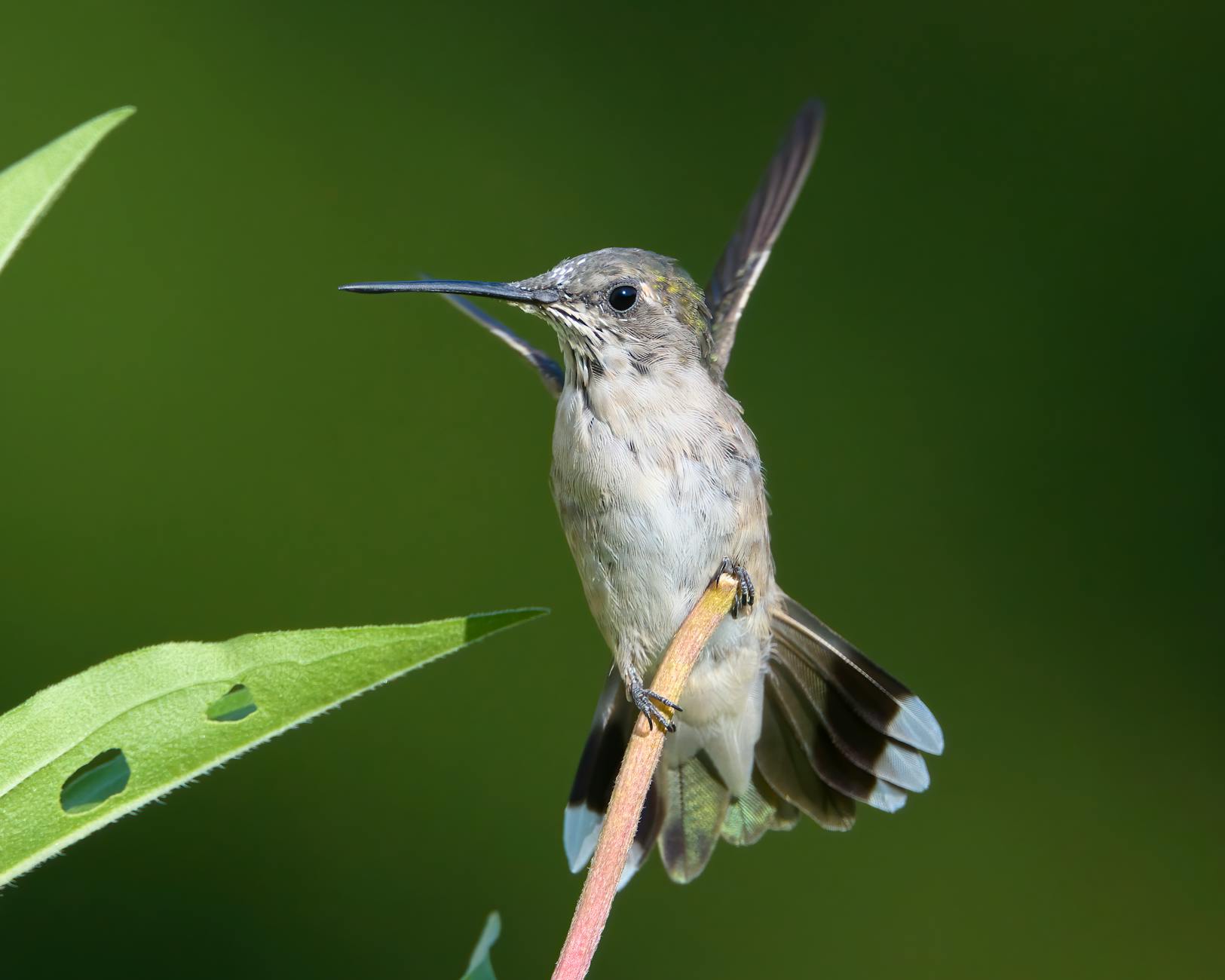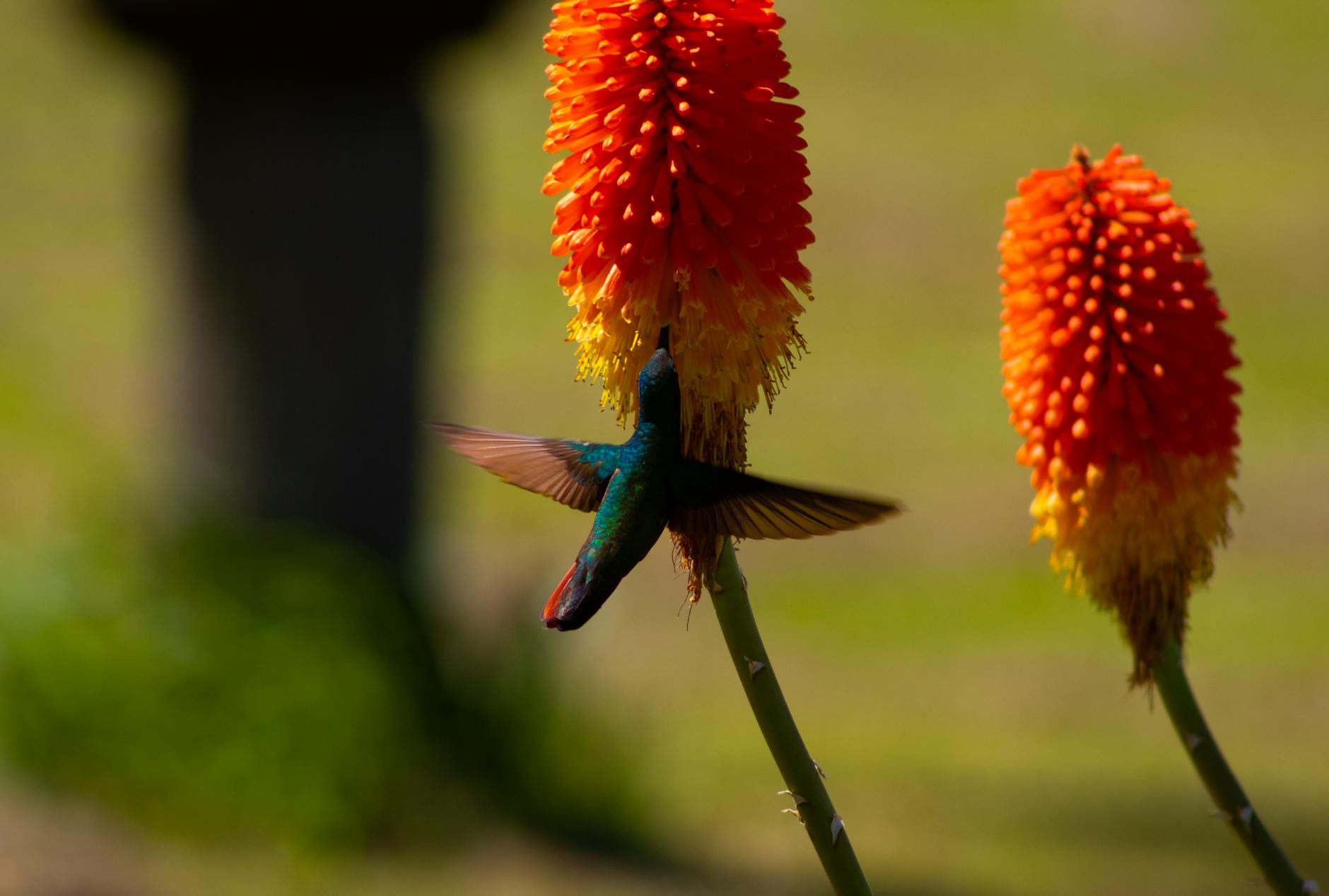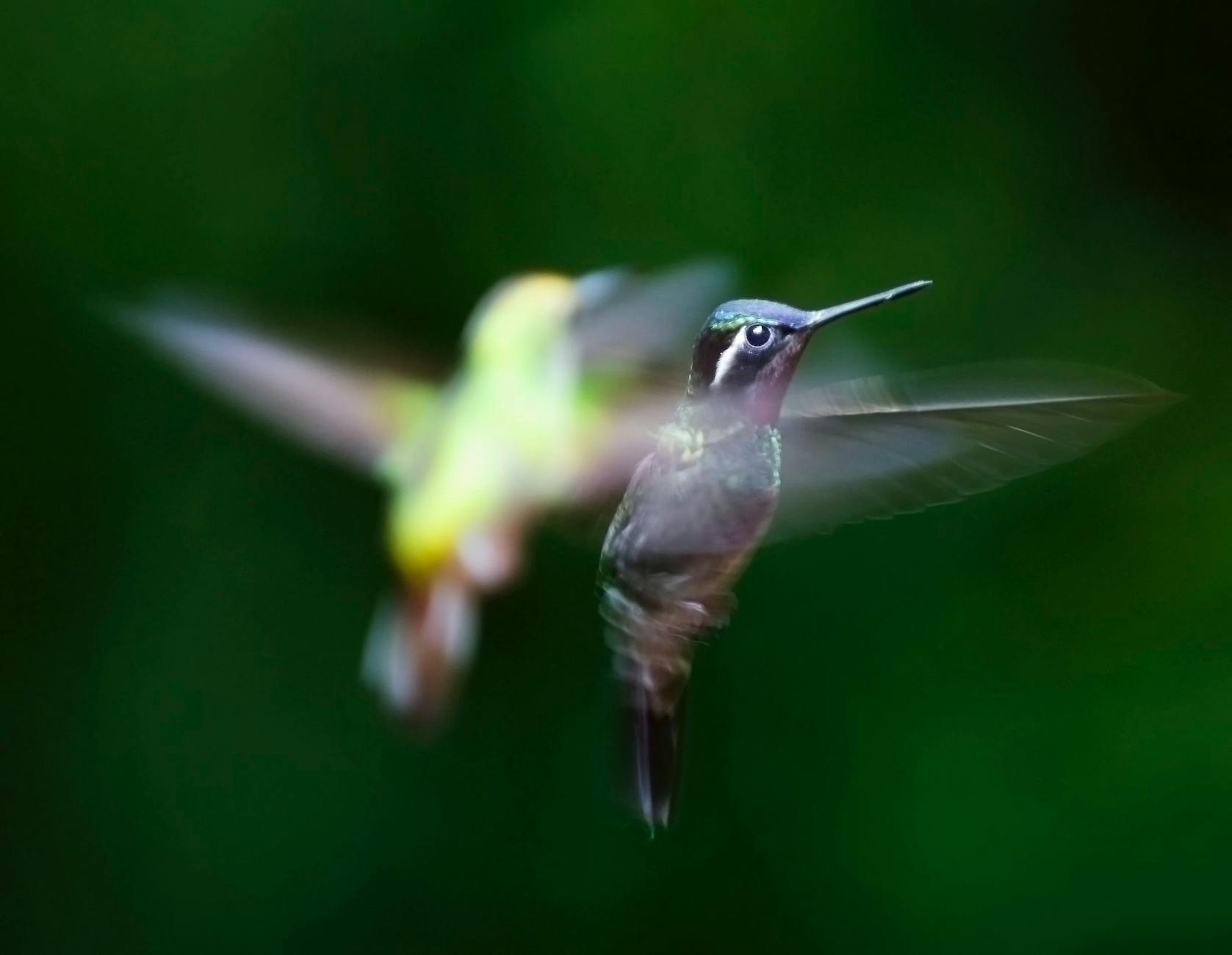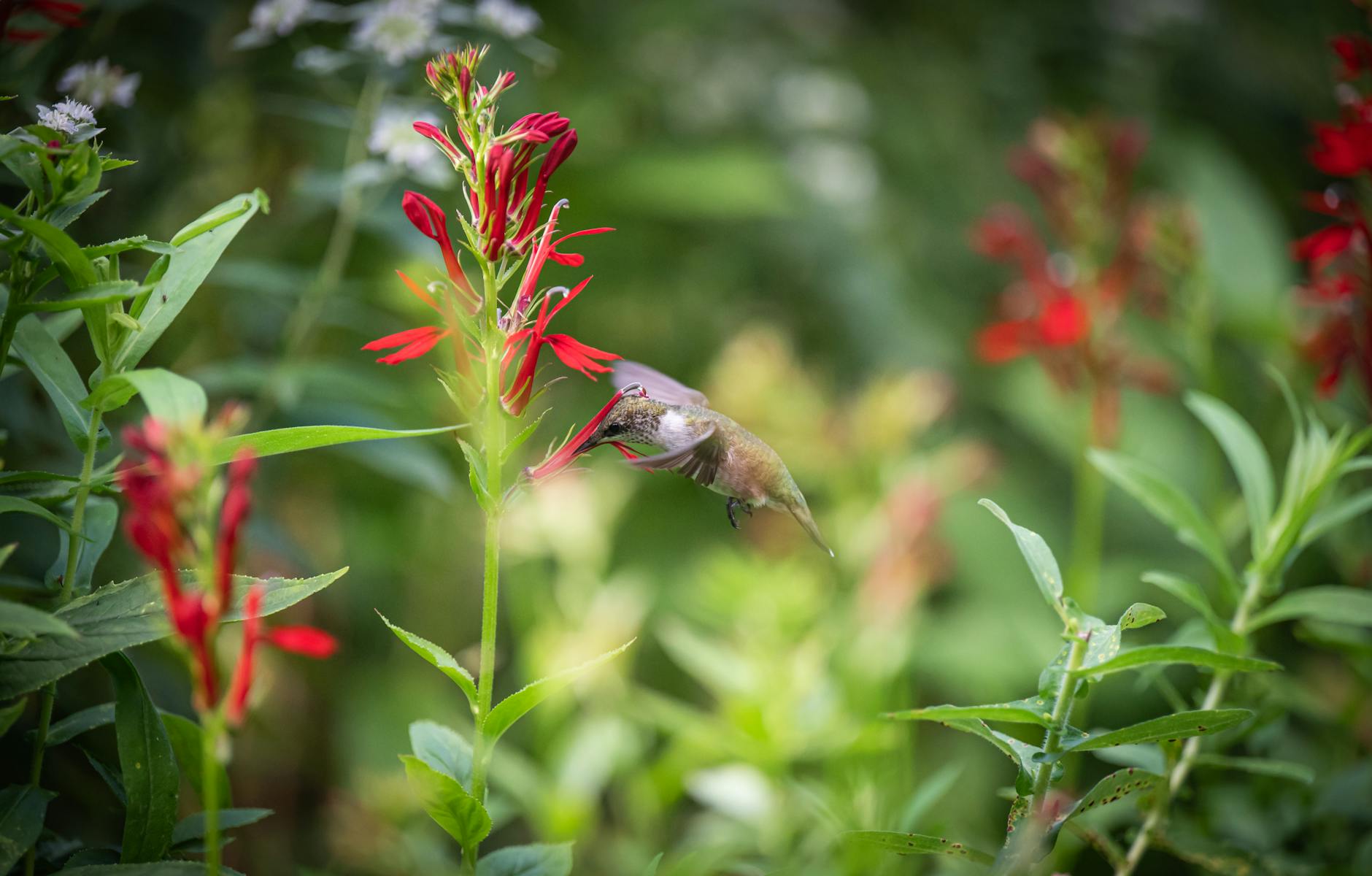
Are Hummingbirds Found in Gulf Shores ?
Gulf Shores, Alabama, is a coastal haven known for its stunning beaches and abundant wildlife. With its mild climate and rich natural habitats, it’s a hotspot for bird lovers. But, are hummingbirds part of this vibrant scene? The answer is yes—these tiny, energetic birds can be found here, often captivating visitors with their dazzling colours and rapid wingbeats. Let’s explore what makes Gulf Shores such an appealing stop for these fascinating creatures.
Do Hummingbirds Live in Gulf Shores, Alabama?
Gulf Shores, Alabama, is not just a beach destination—it’s a thriving habitat for a variety of wildlife, including hummingbirds. Bursting with natural beauty, the area offers a seasonal haven for these tiny but mighty creatures. If you’ve ever been curious about the specific species and why they’re drawn here, this section dives into those details.
Hummingbird Species Found in Gulf Shores
In Gulf Shores, you’ll predominantly come across the Ruby-throated Hummingbird, a species well-known for its vibrant, jewel-like colouring. These birds are the primary species spotted throughout Alabama, particularly during their migration seasons. What’s unique about them? The males have a brilliant red throat, while females are more subtly coloured but equally captivating.
Occasionally, you may also spot rarer visitors such as:
- Black-chinned Hummingbird: Not as common but occasionally seen during migration.
- Rufous Hummingbird: Known for its fiery orange hues, these birds are a rare treat for Gulf Shores visitors.
These species either pass through during their long migrations or, in some cases, make the Gulf Shores area their temporary home. Keep your binoculars handy during spring and autumn—they’re most active then.
Why Gulf Shores Attracts Hummingbirds
Why do hummingbirds love Gulf Shores? The answer lies in its ideal mix of climate, geography, and flora. As a coastal region with a subtropical climate, Gulf Shores provides the warmth and lush greenery that these birds seek, especially during migration season.
Key attractions for hummingbirds in Gulf Shores include:
- Mild Weather: The region’s temperate conditions ensure a stable environment for nesting and feeding.
- Abundant Food Sources: With plenty of nectar-rich flowers, hummingbirds have an easy supply of their primary food. You’ll often see them frequenting trumpet vines, coral honeysuckle, and native wildflowers.
- Diverse Habitats: Gulf Shores offers a mix of gardens, woodlands, and coastal zones, all of which are inviting for hummingbirds. It’s like an all-you-can-eat buffet combined with a stress-free vacation spot.
- Rest Stop for Migration: For birds making the gruelling journey across the Gulf of Mexico, Gulf Shores is a prime pitstop to refuel and recharge.
All these factors combine to make Gulf Shores a hummingbird hotspot. Whether they’re visiting for a brief stay or enjoying an extended season, these vibrant fliers are a testament to the area’s ecological richness. Next time you’re outside, take a quiet moment—they might just be buzzing nearby.
When Can You See Hummingbirds in Gulf Shores?
Gulf Shores, Alabama, is no stranger to the elegant presence of hummingbirds. These dazzling creatures grace the skies during specific times of the year, making the region a favoured spot for bird enthusiasts. Whether it’s during their seasonal migrations or unexpected winter appearances, the timing of hummingbird visits plays a significant role in their captivating allure.
Hummingbird Migration Seasons

Photo by pete weiler
Hummingbirds are migratory creatures, travelling thousands of miles each year. In Gulf Shores, the spring and autumn migration seasons are prime opportunities to catch a glimpse of these birds in action.
- Spring Migration (March to May): As winter thaws and flowers bloom, hummingbirds make their journey north from Central and South America. The Gulf Shores region acts as a vital rest stop for many of these travellers, offering abundant food and shelter. Ruby-throated Hummingbirds are especially common during this time as they surge toward their breeding grounds.
- Autumn Migration (September to October): As the seasons shift, hummingbirds head back toward warmer territories. Gulf Shores becomes an integral layover, allowing the birds to refuel. You’ll likely see them darting from flower to flower, building their energy reserves for the long flight across the Gulf of Mexico.
Keep your feeders stocked with sugar water and your garden vibrant with nectar-rich plants during these seasons. The availability of nourishment can make all the difference for these small yet resilient travellers.
Do Hummingbirds Stay During Winter?
While Gulf Shores sees most of its hummingbird activity during migration, some species do stick around in the colder months. Occasionally, you’ll find birds like the Rufous Hummingbird braving the winter chill. These unique birds are known for their adaptability and may stay in the area if food sources remain accessible.
To encourage winter hummingbirds:
- Keep specialised feeders out, ensuring they don’t freeze.
- Provide plenty of shelter and warmth in your garden.
- Plant hardy blooms that can sustain the birds through colder weather.
Although rare, a winter sighting of these tiny wonders reminds us of nature’s unpredictability. If you’re lucky, you might spot one flitting about—a seasonal gem in Gulf Shores during the quieter months.
Hummingbirds bring a spark of life no matter when they’re observed. Timing is key, but these birds never fail to leave a lasting impression.
How to Attract Hummingbirds to Your Garden in Gulf Shores
Creating a haven for hummingbirds in your garden can bring vibrant life right to your doorstep. Gulf Shores, Alabama, offers an ideal environment for these tiny creatures, but a few thoughtful touches can help ensure they find your yard irresistible.
Best Plants for Hummingbirds

Photo by Vinicius “Braza” Bohrer
One of the simplest ways to lure hummingbirds is with the right plants. Focus on native species, as they thrive in the Gulf Coast’s subtropical climate and provide a natural food source for these birds.
Here are some top picks for hummingbird-friendly plants in Gulf Shores:
- Coral Honeysuckle (Lonicera sempervirens): A climbing vine with tubular red flowers that hummingbirds adore. It’s easy to grow and perfect for trellises.
- Trumpet Creeper (Campsis radicans): Features bright orange blooms rich in nectar—perfect for feeding these winged visitors.
- Cardinal Flower (Lobelia cardinalis): Known for its striking red flowers, this plant is a favourite among Ruby-throated Hummingbirds.
- Salvia: Specifically, Salvia coccinea or Texas Sage, which has a long blooming season and attracts hummingbirds with vibrant red or pink flowers.
- Bee Balm (Monarda): This perennial not only feeds hummingbirds but also brings pollinators like bees and butterflies to your garden.
Planting a mix of these nectar-rich favourites ensures your garden has food all season long for passing and visiting hummingbirds, giving them a reason to stay.
Using Feeders to Support Hummingbirds
Hummingbird feeders are a great supplement to your garden plantings, offering an instant energy source for these high-energy birds. Keep it simple—use a red feeder with a 4:1 water-to-sugar solution (no red dye needed).
To maximise success with feeders in Gulf Shores, follow these tips:
- Placement:
- Hang feeders in shaded areas to prevent the nectar from spoiling too quickly.
- Place them near flowering plants to mimic a natural feeding environment.
- Keep them at least 4 feet off the ground, away from predators like cats.
- Cleaning and Maintenance:
- Clean feeders every 3-5 days to avoid mould and bacteria.
- Use a mixture of hot water and vinegar (no soap) for safe cleaning.
- Seasonal Feeding:
- Start hanging feeders as early as March for spring migrations.
- Leave them up until late October to support late travellers.
Your feeders can become a hotspot for hummingbirds if maintained properly, adding vibrancy and activity to your garden.
Creating a Hummingbird-Friendly Habitat
Beyond plants and feeders, a true haven for hummingbirds includes other elements that cater to their needs. Think of it as building a sanctuary that they’ll want to return to year after year.
- Water Sources: Hummingbirds love a fine mist or shallow water for bathing. Set up a small fountain or misting device, and watch them dart through the spray.
- Shelter: Incorporate small trees and shrubs like Wax Myrtle or Red Cedar for resting and protection. These give the birds a safe place to retreat from predators and bad weather.
- Pesticide-Free Zone: Skip harmful chemicals in your yard. Not only do hummingbirds rely on nectar, but they also eat small insects for protein.
- Seasonal Blooms: Plan a garden with staggered blooming times. This ensures a continuous food supply, especially during busy migration periods.
By including these extra touches, your garden will become a preferred pit stop for hummingbirds as they travel through Gulf Shores. In return, these little aerial acrobats will bring beauty and joy to your outdoor space all year long.
Hummingbird-Watching in Gulf Shores
The vibrant Gulf Shores, rich in flora and fauna, offers an enchanting opportunity for hummingbird enthusiasts. Whether you’re a seasoned birdwatcher or a casual nature lover, the area provides perfect spots to observe these tiny, fast-moving wonders. Below, we explore the best parks and reserves for sightings and practical tips to increase your success rate.
Local Parks and Reserves: Best Places to Spot Hummingbirds

Photo by Pixabay
If you’re chasing a moment with hummingbirds, Gulf Shores boasts natural refuges where these birds thrive. The region is filled with gardens and forests offering both shelter and food sources. Here are some prime locations to consider:
- Gulf State Park: Known for its diverse habitats, Gulf State Park is a hummingbird haven. Wander through the woodlands or explore areas dotted with wildflowers to catch a glimpse of these lively birds. While the park has plenty to offer, head to its nature trails for the best chance of sightings.
- Bon Secour National Wildlife Refuge: This sanctuary is a magnet for migratory birds, including hummingbirds. The refuge’s blend of marshes, dunes, and forests creates an ideal environment for feeding and resting. Visiting during migration periods (spring and autumn) will maximise your chances of observing them in action.
- Audubon Bird Sanctuary on Dauphin Island: Located just a short drive from Gulf Shores, this 137-acre sanctuary is known for attracting both resident and migratory birds. It’s a stunning stopover for many species, and hummingbirds are no exception.
These locations combine scenic beauty and ecological importance, making them perfect for birdwatching. Bring your binoculars, set aside some quiet time, and immerse yourself in the natural rhythm of Gulf Shores.
Tips for Spotting Hummingbirds
Spotting hummingbirds in the wild can feel a bit like finding a hidden treasure—they’re there, but not always easy to see. With a little patience and preparation, though, you can increase your odds significantly. Here’s how:
- Arrive Early or Stay Late: Hummingbirds are most active during the early morning and late afternoon when temperatures are cooler, and they’re feeding more often.
- Focus on Flowering Plants: Look around blooms like trumpet creeper or coral honeysuckle. These are hummingbird favourites due to their high nectar content.
- Listen for Their Buzz: Hummingbirds make a faint “zooming” sound with their wings. Quietly tune into these subtle noises to locate them nearby.
- Remain Still: Sudden movements scare hummingbirds away. Stay calm and patient for the best results.
- Choose the Right Gear:
- Use lightweight binoculars with a close focus to pick up even distant details.
- Dress in muted colours that blend with the surroundings to avoid startling the birds.
- Research Migration Patterns: Timing is everything; spring and autumn migrations provide peak opportunities to see them in large numbers.
- Visit Feeders: Many public parks and sanctuaries have installed specialised hummingbird feeders. These hotspots often attract the birds throughout the day.
Hummingbird-watching in Gulf Shores is as much an exercise in mindfulness as it is an engagement with wildlife. By following these tips, you’ll not only improve your chances but also enjoy a richer, more immersive experience in nature’s playground.
Hummingbirds and Conservation
Hummingbirds might be small, but their plight points to larger environmental issues. In Gulf Shores, Alabama, these shimmering travellers face numerous challenges, and it falls on both nature lovers and locals to safeguard their presence.
Challenges Hummingbirds Face

Photo by Chris F
Hummingbirds in Gulf Shores encounter several obstacles that threaten their survival. The most pressing challenges stem from habitat loss and climate change, both of which disrupt the delicate balance these birds rely on.
- Habitat Loss: Urban development and land clearing reduce the availability of native plants, nesting sites, and feeding grounds. As housing expands, the wild spaces these birds need shrink day by day.
- Climate Change: Increasingly unpredictable weather patterns make migration treacherous. Late springs and early frosts disrupt feeding cycles, while rising temperatures affect the bloom times of nectar-rich plants.
- Pesticides: The use of harmful chemicals in gardens and agriculture kills the insects hummingbirds eat for protein. These toxins can also contaminate water sources, further threatening their health.
- Migration Risks: Gulf Shores plays a critical role during migration, but crossing the Gulf of Mexico is already a monumental task. Habitat changes on either side of their journey make it harder for them to refuel and rest.
Without action, these challenges could lead to fewer hummingbirds stopping in Gulf Shores and harm their overall populations.
How Locals Can Help
Gulf Shores residents have a unique opportunity to make a tangible difference. Small, thoughtful actions can collectively ensure that hummingbirds thrive for generations to come.
Here are meaningful ways locals can help:
- Plant Native Flowers: Introduce plants like coral honeysuckle, trumpet creeper and bee balm to your garden. These nectar-rich options provide an essential food source throughout the year.
- Avoid Pesticides: Opt for natural pest control solutions to protect the insects hummingbirds rely on. Healthy ecosystems benefit everyone.
- Install Feeders: Place hummingbird feeders filled with a simple sugar-water solution (4 parts water to 1 part sugar). Keep them clean to prevent bacteria buildup.
- Create a Safe Space:
- Provide shrubs and small trees for shelter.
- Add bird-friendly water features such as a mister or shallow fountain.
- Keep domestic pets, especially cats, away from feeding areas.
- Participate in Conservation Programmes: Join local efforts focused on habitat restoration and wildlife conservation. Collaborating with nature organisations amplifies the impact of your actions.
- Spread Awareness: Educate family, friends, and neighbours about the importance of supporting local ecosystems. The more people involved, the better the results.
Each step, no matter how small, contributes to making Gulf Shores a haven for hummingbirds. Together, locals and visitors can celebrate and preserve the magic these birds bring to the area.
Conclusion
Hummingbirds are a delightful part of Gulf Shores, Alabama’s natural landscape, drawing admiration with their vibrant beauty. These tiny travellers find refuge in the area’s mild climate, lush plants, and ample food sources during key migration periods.
Whether you’re enjoying their presence in a local park, your garden, or the wild, take a moment to cherish their role in the ecosystem. Keep your feeders stocked, your garden blooming, and your heart open to nature’s wonders.
Protecting these birds ensures their spectacular displays remain a joyful staple of Gulf Shores for years to come. What will you do today to welcome them into your world?






